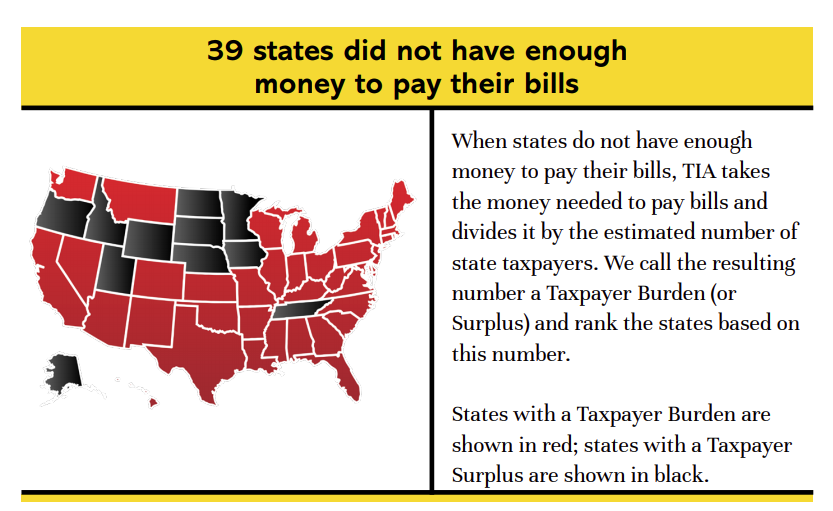
Thirty-Nine States Don’t Have Enough Money to Pay Their Bills
SchiffGol
t’s not just the federal government running massive deficits and piling up enormous levels of debt. Thirty-nine US states don’t have enough money to pay all of their bills.
That was the grim conclusion of Truth in Accounting’s annual Financial State of the States report.
The report summarizes a comprehensive analysis surveying the fiscal health of the 50 states prior to the coronavirus pandemic.
Total debt for all states combined totaled $1.4 trillion at the end of fiscal 2019. This does not include debt related to capital assets.
Most of the states were ill-prepared for any crisis, much less one as serious as what we are currently facing.”
Ironically, 49 states require balanced budgets by law. As the report explains, “This means that to balance the budget … elected officials have not included the true costs of the government in their budget calculations and have pushed costs onto future taxpayers.”
The vast majority of state debt comes from unfunded retirement benefit obligations. This includes pension plans and retiree healthcare liabilities. Pension debt accounts for $855 billion and other post-employment benefits (OPEB) totaled $617 billion at the end of FY 2019.
The coronavirus pandemic and the accompanying government-imposed economic shutdowns have only exacerbated financial problems at the state level. The report estimates the 50 states could lose $397 billion in revenue.
These numbers pale compared to the debt being piled up by the federal government. But Uncle Sam has access to the Federal Reserve’s printing press and can create money out of thin air to backstop its borrowing and spending. States don’t have that option. They have to rely on accounting tricks and ultimately federal bailouts to fill their gaping budget holes. The surging levels of state debt will probably end up piled on top of the national debt.
The Financial State of the States report ranks the states by their fiscal health based on taxpayer burden. This is the amount of money each taxpayer in the state would have to pay if the state were to pay off all of its accumulated debt. (Conversely, how much each taxpayer would receive if the budget surplus was divvied up among taxpayers.)

The five biggest sinkhole states are:
- 50. New Jersey (-$57,900)
- 49. Illiniois ($52,000)
- 48. Connecticut ($50,700)
- 47. Hawaii ($31,700)
- 46. Massachusetts ($30,100)
The five healthiest “sunshine states” are:
- 1. Alaska ($77,400)
- 2. North Dakota ($37,700)
- 3. Wyoming ($19,600)
- 4. Utah ($5,500)
- 5. Tennessee ($3,400)
The only other states able to pay all of their bills are South Dakota, Nebraska, Idaho, Oregon, Iowa, and Minnesota.
Here are all 50 states ranked from financially healthiest to sickest.
1. Alaska
2. North Dakota
3. Wyoming
4. Utah
5. Tennessee
6. South Dakota
7. Nebraska
8. Idaho
9. Oregon
10. Iowa
11. Minnesota
12. Oklahoma
13. Virginia
14. Indiana
15. North Carolina
16. Florida
17. Arkansas
18. Arizona
19. Montana
20. Colorado
21. Nevada
22. Georgia
23. Wisconsin
24. New Hampshire
25. Missouri
26. Ohio
27. Washington
28. Kansas
29. West Virginia
30. Maine
31. New Mexico
32. Alabama
33. Mississippi
34. Texas
35. South Carolina
36. Rhode Island
37. Maryland
38. Pennsylvania
39. Michigan
40. Louisiana
41. New York
42. Vermont
43. California
44. Kentucky
45. Delaware
46. Massachusetts
47. Hawaii
48. Connecticut
49. Illinois
50. New Jerse
